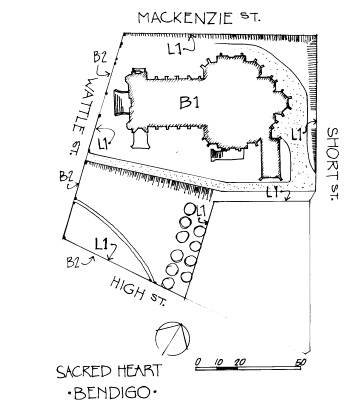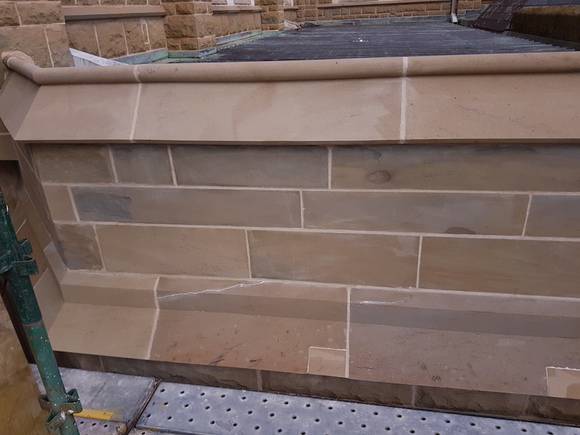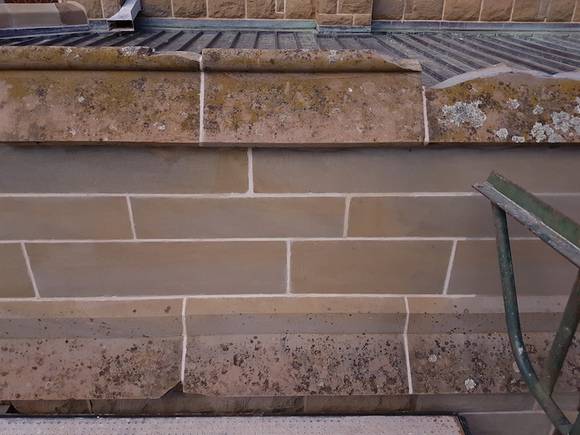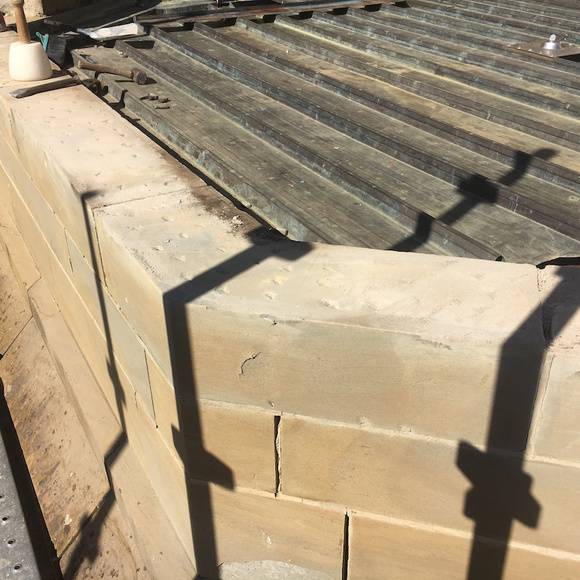| Back to search results » | Back to search page » |
|
SACRED HEART CATHEDRAL
Statement of Significance
What is significant? It was originally intended that a Roman Catholic cathedral would one
day be built on the site occupied by St Kilian's Church in McCrae
Street, Bendigo. However land on one of the highest points of the city
became available in Wattle Street which was part of the extensive
estate of Rev. Father Dr Henry Backhaus (1811-1882), pioneer clergyman
of the Roman Catholic Church, Bendigo. The Sacred Heart Cathedral is of architectural, historic, and
aesthetic importance to the State of Victoria. The Sacred Heart Cathedral is architecturally important as
Australia's largest provincial church. Constructed in sandstone and
local granite in an authentic Decorated Gothic style, the church is
significant as the only cathedral in the State to be completed in this
style this century. It closely follows the original 1895 design of
William Brittain Tappin (1854-1905) and the nave is an important
legacy of some of the finest Victorian period ecclesiastical
architecture in this country. The interior is architecturally
important for its superb spatial proportions, fine hammerbeam roof,
and monumental compound
Designed by Reed, Smart and Tappin, construction of the Sacred
Heart Cathedral, Bendigo commenced in 1896, with the foundations, and
the aisle, the nave and lantern towers built by 1901. Work ceased for
lack of funds in 1908, and it was not until 1954 that construction
recommenced, with completion achieved in 1977. The church comprises a
seven bay nave, narthex, crossing, apsidal sanctuary, three-bay
transepts, and four octagonal chapels flanking the crossing. The
exterior is dominated by a crossing tower and spire, and the west
front with prominent flanking turrets. The interior features an oregon
and kauri hammerbeam roof, west window by Hardman, and a divided organ
built in 1904 by Bishop & Son, London. The floors, altars and font
are crafted from a variety of marbles, and the pews are of blackwood.
The twentieth century work was largely executed by sixteen craftsmen,
most of whom were Italians brought to Australia expressly for the purpose.
How is it significant?
Why is it significant?
piers and arched arcades.
The Cathedral is aesthetically important as a landmark building
set high on a grassy knoll. The Cathedral and its setting dominates
High Street.
The Cathedral is also aesthetically important for its internal and
external decorative detail. Significant fixtures and fittings include
carved stonework, stained glass particularly that in the west window,
blackwood pews, timber panelling, and the organ. Notable external
fixtures include the cast aluminium spire gargoyles, decorative cast
iron balustrading and lamps, door strap-hinges, and the perimeter
fence. Important movable objects include the Stations of the Cross
painted by prominent nineteenth century Italian ecclesiastical artist
A.F.D. Cavallaro which are framed in ornately carved
walnut timber,
the eagle lectern a gift of Bendigo's quartz king, George Lansell, the
Bishop's Chair with its associated chairs carved by Ferdinand
Stuflesser from Austrian oak, and the McCormick baptismal font.
The Cathedral is historically important for its association with
Rev Dr Henry Backhaus, pioneer clergyman of the Roman Catholic Church
on the Bendigo goldfields, whose estate provided the land for the
building. The Cathedral has further associations with Rev Martin
Crane, first Bishop of Sandhurst from 1874-1901 who initiated the
building of the cathedral and donated the west window; and with
Bishops Stephen Reville (1901-1916), John McCarthy (1917-1950), and
Bernard Stewart (1950-1979) who worked towards the completion of the building.
Group
Religion
Category
Cathedral












